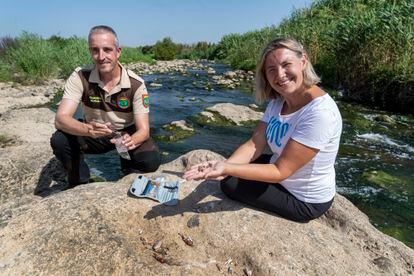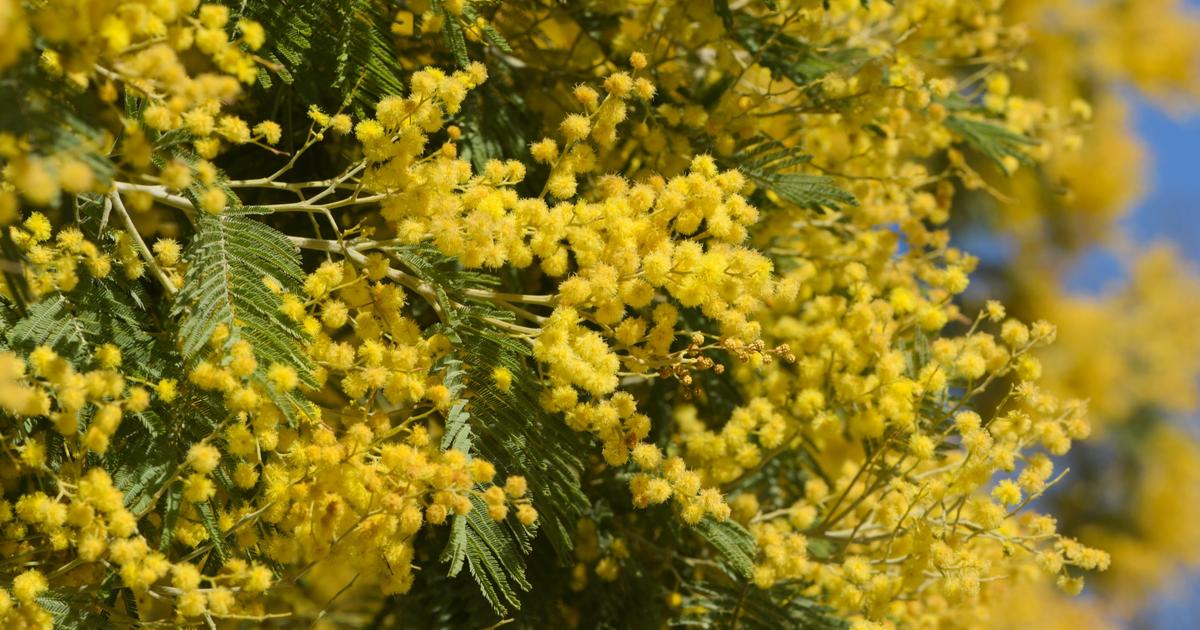An otter at the mouth of a river. Francisco Valverde
The otter was an endangered species in the Valencian Community, at the beginning of the eighties.
His fate seemed irreversible.
However, now the population of this aquatic mustelid has multiplied and its presence has been detected in unsuspected places even a century ago.
Today it is a vulnerable animal, but not in extinction.
The improvement in the quality of rivers due to wastewater purification processes starting in the 1990s and the assumption of protectionist policies are two reasons that usually explain this increase.
Now another one has been added that could be key: the expansion of an invasive species, the American crab or red crab, which has become the main diet of otters, according to research on their eating habits.
The analysis of more than a hundred otter depositions, carried out since 2018, confirms that 75% of their food comes from this invasive crab, explains Sales Tomás, manager of the Limne Foundation, who has prepared the study in collaboration with the Valencia Water Foundation.
"The growing role of the invasive American crayfish in the diet of the threatened mammal suggests that changes in its nutrition could have had a significant influence on the recovery of the species experienced in recent years," says Tomás.
Gonzalo Juan, rural guard, who found the first otter tracks at the mouth of the Mijares, and Sales Tomás, environmentalist and head of the Limne Foundation, in an image from July 2020. Mònica Torres
This invasive crab, which was introduced in the 1970s, notably decimated the native crab population, which has recovered somewhat over the years, due to the fact that it transmits a disease that does not affect the American crustacean.
But, on the other hand, the ecosystem has been assuming its presence and predators have incorporated it into their diet, giving life.
“The ecosystem is learning;
Nor should we be apocalyptic with the so-called invasive or exotic species, explains Juan Jiménez, an otter scholar since the 1980s and a biologist from the Ministry of Agriculture, Rural Development, Climate Emergency and Ecological Transition, who has also participated in the research.
The case described would be a good example of how the introduction of an invasive species causes significant imbalances and can modify pre-existing ecosystems, almost always negatively, although for the otter and in this specific case a positive impact is described, point out Adrián Lacomba and David Campos-Such, authors of the study presented last Friday at the Agencies headquarters in Valencia.
So an invasive species has contributed decisively to saving from extinction at least in the Valencian Community.
Also in Castilla-La Mancha the change of diet has been detected in the droppings, adds Jiménez.
This research, in any case, aims to open the door to new studies that may confirm or relativize this working hypothesis.
Its authors maintain that "the wide distribution of the American crab,
Procambarus clarkii,
seems to be one of the factors that has led to the increase in numbers of otters, together with the improvement in the rivers."
In addition, as they do not have too many environmental requirements, the red crab is also found in degraded rivers and unstable ecosystems, which "significantly" expands the areas through which the otter can extend its territory and access new basins", a factor more than promotes its expansion
After the crab, the otters feed on native fish, barbels and, anecdotally, reptiles, says Sales Tomás, who exhibited at the presentation a plastic envelope with a sample of excrement that gave off a strong "smell of shellfish."
This American crab resists very well the discontinuous, dry and torrential nature, which characterizes the Valencian rivers of the Mediterranean coast.
"They close in on themselves, they hide in the sand and they last a long time," says Jiménez.
Thanks to this resistance, the otters find food and their population increases, although there is no estimate of their number due to the difficulty of this type of calculation as it is a very elusive animal, experts say.
If there is verification of its undoubted presence in many places where before there was no evidence due to the appearance and analysis of its excrement.
50% off
Exclusive content for subscribers
read without limits
subscribe
I'm already a subscriber



/cloudfront-eu-central-1.images.arcpublishing.com/prisa/MN37VSL3FNG7NIKWVLIW6PTTPI.jpg)







/cloudfront-eu-central-1.images.arcpublishing.com/prisa/KMEYMJKESBAZBE4MRBAM4TGHIQ.jpg)


